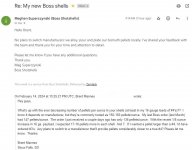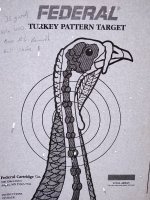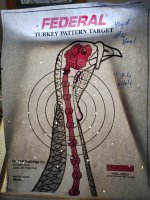A5 Sweet 16
Well-known member
I'm very pleased with the 1 ounce #5 Boss shells (16 ga).
I want to get some 1-1/8 ounce and was thinking about #4. But, now I'm thinking about sticking with the #5.
I rarely take those long shots...most shots are over point. Thoughts?
I shot 1 oz of Kent 5s for years, happily, unless shots were over 40 yds. Boss 4s made a nice difference, but as pellet count decreased, it became apparent in my ability to kill longer birds, & I had to tighten up my choke a bit. Not a big deal, but not ideal. If I rarely took a 40+ yd shot, I'd use 5s, but they're just not rare enough. I'd be real curious to get a good pellet/oz count on Boss's current run of 5s. Of course, if the guys hoarding cases & cases 1-1/4 oz Tungsten Matrix 5s they'll never shoot would just sell them to me, I could just forget about this bismuth business forever.



